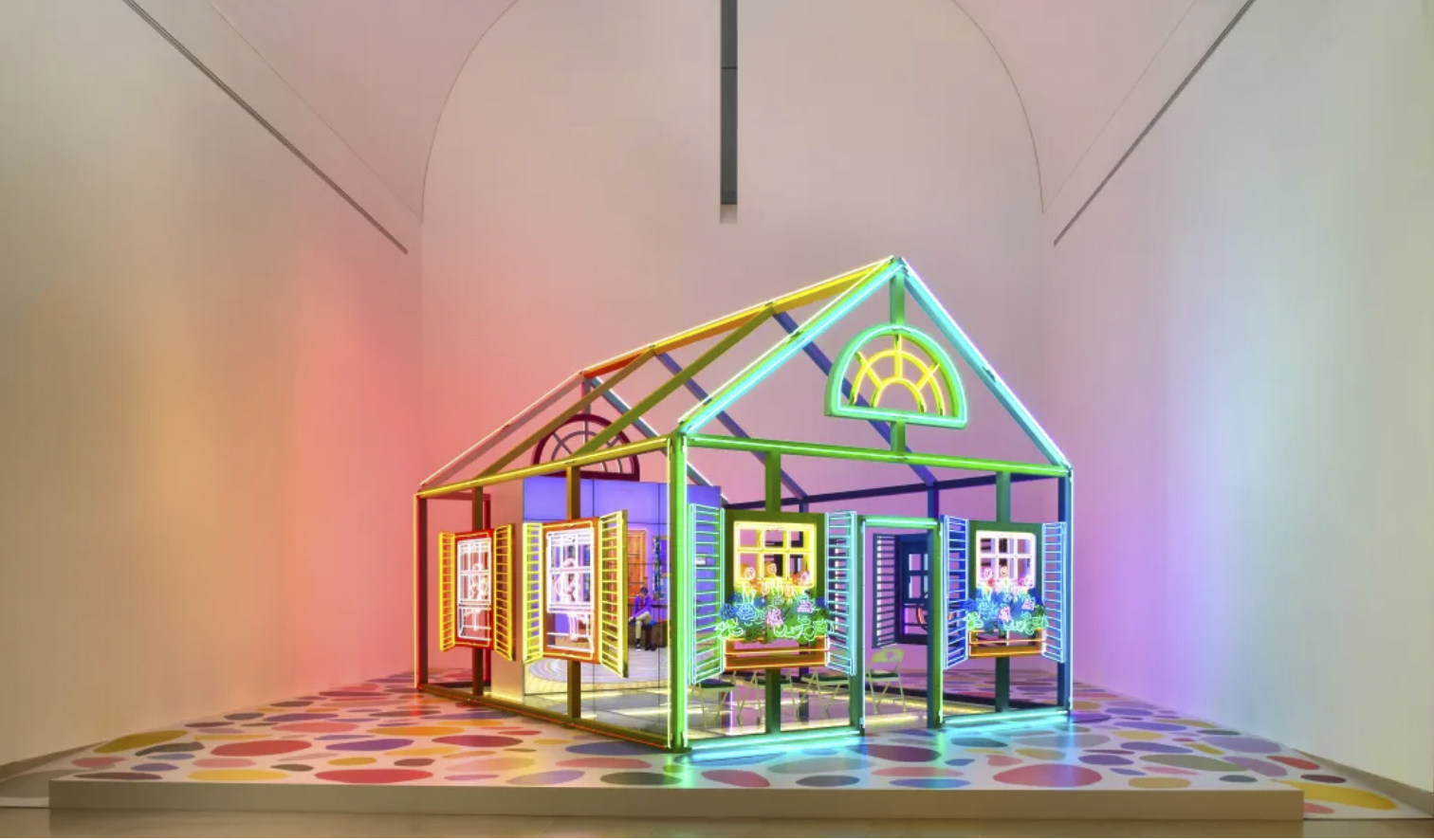Rubber Pencil Devil: A Symbol for Belonging
In recent research, I sought to develop a deeper understanding of semiotics which I explored through interpretative analysis of Alex Da Corte’s installation, Rubber Pencil Devil. The video above is my presentation on this research. At the end of the video, there is a note about watching Alex Da Corte as he films and creates this work of art, which I have linked here: https://art21.org/watch/extended-play/alex-da-corte-57-varieties-short/. Below is some more of my musings on this work of art and its possible interpretations.
Rubber Pencil Devil: A Symbol for Belonging
Contemporary artist Alex Da Corte’s installation Rubber Pencil Devil (2018) housed a screen which looped 57 videos in honor of the 57th edition of the Carnegie International in Pittsburgh, Pennsylvania. The installation was recently mounted as part of the 2020 exhibition For a Dreamer of Houses at the Dallas Museum of Art in Dallas, Texas. Da Corte conceptualized and starred in each of the 57 video segments, unifying what would be the seemingly randomized selection of childhood pop-culture television characters. The artist and his team created costumes, sets, and props for Da Corte to embody the representation of memorable television figures like The Wicked Witch of the West, Mr. Rogers, Pink Panther, Bart Simpson, and Daffy Duck.
These figures and characters within the video segments share a commonality; they are the symbols of the artist’s childhood, representing the transitory nature of adolescence and life in general. As Da Corte has said; “we as a country and people are always transitioning.” And on speaking of Rubber Pencil Devil, Da Corte states that “this house is a portrait of the land I live in.” In one of the 57 videos, dressed as half Big Bird, and half Caroll Spinney (the actor who played Big Bird and Oscar the Grouch on Sesame Street), Da Corte marks this active transition between two selves—the former and present self—and can freeze this moment of passage eternally in this video as he seats dining across from another actor playing Oscar the Grouch. Da Corte here comments on and recognizes our duality in human nature, the parts of us that are often unseen or misunderstood, but still hold the same value and weight as the other seen and accepted parts by society at large.
The house structure which surrounds the video screen is made of neon lights, and the framework only suggests doors, windows, a roof and walls. The framework remains open for the mind to wander and enter into a dreamlike experience. As he reflected on his childhood, Da Corte says his home was a way to protect him from the world. However, in Rubber Pencil Devil, the absence of a roof and walls denote to the vulnerability of external factors which could easily enter the home and affect the psyche and personal experiences of those who live within. One major gateway of these external factors permeating the literal or figurative walls of the home is through television. Da Corte speaks to the deeply affecting nature of television: “How do I know my politics? How do I know my religion and how do I know my love? I probably learned it from my family, but mostly, I probably learned it from TV.”
Our development throughout life, from birth until death, is often a menagerie of events much like the variety show of videos Da Corte offers to the viewer in Rubber Pencil Devil to digest and react to. This installation reminds us of our own snapshots of the people, characters, and figures throughout our life that have shaped our thoughts, our ideals and our beliefs. Are we ever successfully “sheltering” ourselves from any sort of influence? I cannot imagine a world where we are not affected by our caregivers, our neighborhood, or our immediate environment. Even a tree that may grow in our yard that obstructs our view from our childhood window holds an influence over our perspective. We can see the tree itself, consider how it grows and changes each season, speculate on who put it there, and contemplate what may lay beyond it. Our thoughts move from concrete to abstract as we first consider the physical nature of a thing, and then we evolve towards the metaphysical and existential.
The making of art, and specifically in the case of Rubber Pencil Devil, can propel us from the concrete state of a figurative house in our mind—the safe place where things make sense and order resides—towards the indefinite, chaotic “outer world” where the mind is engaged with the soul as it searches for answers to all the longings that have been laid dormant within us for a time. Alex Da Corte sums this up well, stating “that is why we make art, to propose that these feelings should come to the surface and be harvested.”
